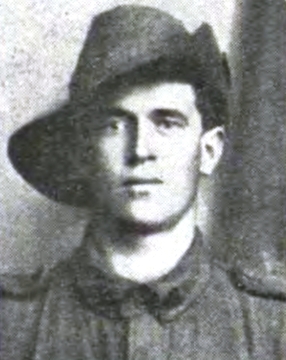REARDON, William Alfred
| Service Number: | 50236 |
|---|---|
| Enlisted: | 3 July 1918, Enlisted in London, England |
| Last Rank: | Private |
| Last Unit: | 5th Machine Gun Battalion |
| Born: | Liverpool, New South Wales, Australia, 28 August 1897 |
| Home Town: | Cabramatta, Fairfield, New South Wales |
| Schooling: | Not yet discovered |
| Occupation: | Labourer |
| Died: | Auburn, New South Wales, Australia, 19 July 1964, aged 66 years, cause of death not yet discovered |
| Cemetery: |
Macquarie Park Cemetery and Crematorium, Ryde, New South Wales Catholic Monumental AA10 Plot 27 |
| Memorials: |
World War 1 Service
| 3 Jul 1918: | Enlisted AIF WW1, Private, 50236, Reinforcements WW1, Enlisted in London, England | |
|---|---|---|
| 22 Jan 1920: | Involvement AIF WW1, Private, 50236, 5th Machine Gun Battalion |
Help us honour William Alfred REARDON's service by contributing information, stories, and images so that they can be preserved for future generations.
Add my storyBiography contributed by VWM Australia
Contributed by his grandson Robert John Wood.
William Alfred Reardon was born in Liverpool, New South Wales, on 28 August 1897, the second eldest son of William Joseph (Paddy) and Matilda Mary Reardon of John Street, Cabramatta.
He was unable to enlist in Australia due to being medically unfit. He travelled to England as a munitions worker where he worked in in War Industries in London. He continued to attempt to enlist while in London (reportedly 10 times) before he was finally successful and joined the AIF at London HQ on 3 July 1918. He was posted as a Private to the General Service Reinforcements, later joining the 5th Australian Machine Gun Battalion. Although he did not see combat before the Armistice, he was sent to France in December 1918 and remained in uniform during a grim and essential mission.
In early 1919, William was attached to the Australian Graves Registration Detachment, where he took part in locating and exhuming the battlefield dead, identifying them where possible, and reburying them in Commonwealth cemeteries. He told his family of “piles of spare parts” — dismembered arms and legs recovered from the battlefield — sometimes used to complete a body for proper burial. The corpses were often in various stages of decomposition, buried in shallow graves or left exposed. The work was emotionally exhausting and physically filthy.
He returned to Australia aboard the HT Friedrichsruh and was discharged on 4 April 1920. He married Alma Margaret Aspinall in 1925 and returned to life as a sheet metal worker in western Sydney, where they raised their family of Yvonne, William Frederick, and Alan Edward. He died at Auburn Hospital in 1964 at age 66, having lived with what we now understand as symptoms consistent with PTSD.









